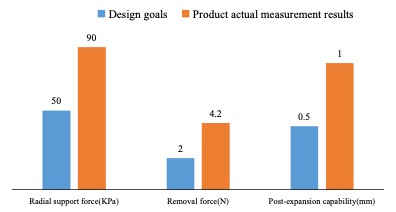Materials Genome Initiative and Polymer Degradable
stent Configuration Design
Wentao Jiang1*, Yu Chen1, Xiaobao Tian1, Guo Chen3, Liang Wang3, Xuefeng Hu2, Rifang Luo2
1 School of Architecture and Environment, Sichuan University, Chengdu, 610065, China;
2 National Engineering Research Center for Biomaterials, Chengdu,
610065, China;
3 Sichuan Xingtai Pule Medical Technology Co.,
Ltd., Chengdu, 610000, China
ABSTRACT:
Materials Genome Initiative (MGI) is an
innovative research model that accelerates the research and development of new
materials through the deep integration of "Rational Design-Efficient
Experiment-Big Data Technology" and the entire process of collaborative innovation,
which mainly includes: high-throughput computing, high-throughput experiment
and big data technology. High-throughput computing and experiment are more
rational and efficient in method design than the traditional "trial and
error method". However, In the screening process, the blindness of
obtaining material attribute data (gene), the contingency of the research
process, and low density of material property data value will inevitably occur.
The material big data technology can achieve the efficient search of material
relationships through data sharing and machine learning methods, trying to find
and establish the relationship between "Composition→Structure→Performance",
but the material relationship established in this way is usually correlation, not
causation. How to discover the causal logical relationship between the basic
properties of materials should be an important consideration in MGI theoretical
research. In addition, high-throughput computing or high-throughput experiment
is usually the characteristics of the MGI method, there is currently a lack of
effective high-throughput computing methods by using finite element methods for
stent configuration optimization design. As the stent configuration includes
several design parameters, the parameters influence each other or even
contradict each other. For example: Increasing the coverage rate can increase
the supporting force,but it will lead to difficulty in pressing and holding,
and poor compliance. This paper sorted out more than 100 literatures related to
vascular stent design in the past ten years, and screened out 15 candidate
configurations. Aiming at the design requirements of ideal polymer stent (good
radial stent force, toughness, compression performance, flexibility, small
shrinkage and compression size), by analyzing the contribution of various
factors to the performance of the stent, the three most important design
elements are obtained: stent, coverage and elastic retraction. Combining the
actual application environment and preparation technology level of the polymer
stent, 4 configurations were screened out again, and the optimal configuration
was finally obtained through finite element calculation and experimental
validation. The main parameters were significantly improved by comparing with
the design goals (As shown in Figure 1). This study reminds that the MGI should
base on the internal law to discover the causal logic relationship that affects
the design requirements. By effectively controlling the key or main influencing
factors ("causes"), the precise research and development of the
design purpose ("effects") can be achieved, which is expected to
eventually obtain a truly efficient material research and development system.

Figure
1. Comparison
of measured parameters and design goals of the new stent structure
Keywords: Materials Genome Initiative; Polymer Degradable stent; Configuration design

Professor Jiang Wentao, graduated from Sichuan University, is currently a doctoral supervisor and party secretary of School of Architecture and Environment, Sichuan University. Long engaged in cardiovascular hemodynamics, biomechanics research in prosthetics and rehabilitation, presided over 9 national projects(National Natural Science Foundation of China, Ministry of Science and Technology Key Research and Development Project, Military Commission Innovation Special Zone Project, etc.), 5 horizontal projects, the accumulative amount is more than 8 million yuan. More than 100 scientific research papers and 8 patents have been published. Won the second prize of Science and Technology Progress Award of the Ministry of Education in 2004.